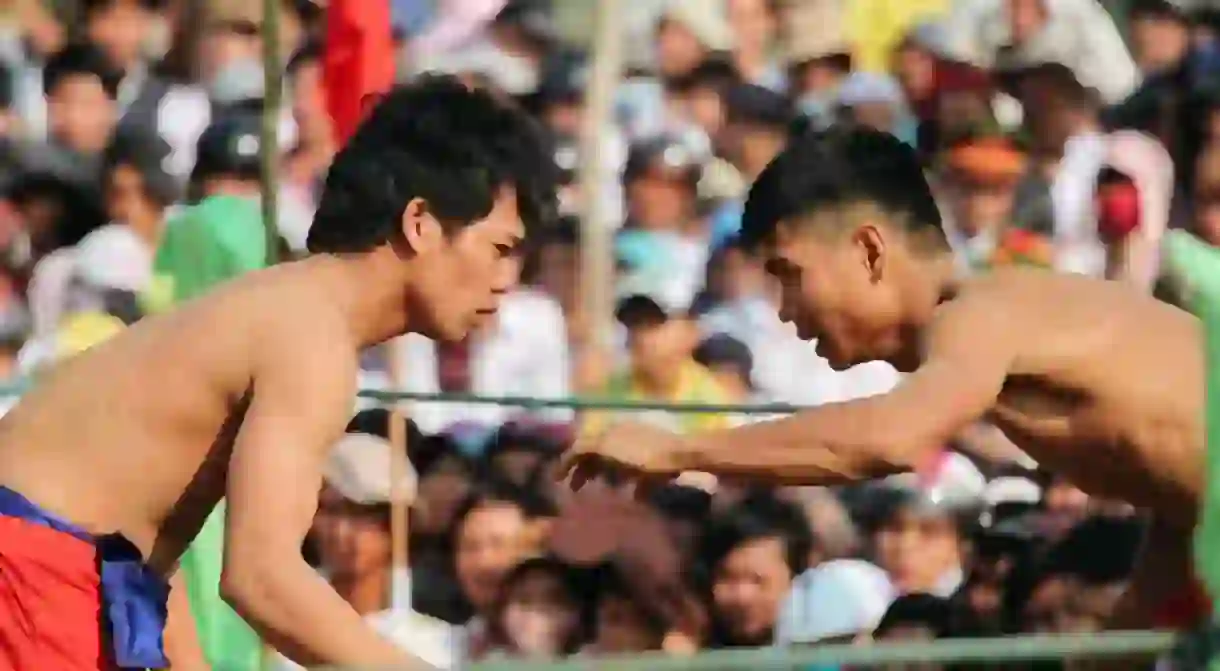10 Traditional Vietnamese Martial Arts You Should Know

There is a long history of martial arts in Vietnam. Some are adaptations of similar styles from the region, while others are homegrown, developed by Vietnamese masters through years of study. Here are the 10 martial arts from Vietnam you should know.
Võ Việt Nam
Also called Vovinam, this style employs a wide variety of techniques, including grappling, strikes, counter-attacks and the use of weapons. Võ Việt Nam is the most widely studied and practiced martial art in the country. It was created in 1938 by Nguyễn Lộc, who hoped that by teaching Vietnamese people how to fight, they would be better able to overthrow the colonial French.

Võ thuật Bình Định
Bình Định Province, a coastal region in southern Vietnam, is famous for its long history of warriors. This is where the Tây Sơn dynasty was born, from a peasant uprising in the 18th century that was led by three fierce fighters from the region, and from that proud lineage came the Bình Định Martial Arts Style. One of the more notable aspects of this style is that it uses 18 weapons, including chains, spears and hammers.
Nhất Nam
This young martial arts style was created in 1986 by Ngô Xuân Bính. He lived in Hanoi and wanted to unify Vietnam’s various martial arts disciplines into one – hence the name, which means “One Vietnam.” Nowadays, the style has gained a significant following in Russia.
Đấu Vật
Traditional Vietnamese wrestling is an integral part of Tết celebrations in many rural areas. Competitors perform a dance to show respect and then try to take out their opponent with sweeps, grabs and takedowns. To win, you must either get your opponent belly up or remove both their feet from the ground. Like other forms of wrestling, no strikes are permitted. Some regions hold their Đấu Vật competitions on carpet, while others use sand.




Vạn An Phái
This style dates back to the Nguyễn dynasty, when Huế was the capital of Vietnam. It was practiced by the Imperial Guards, the people responsible for keeping the Emperor and everyone around him safe. The style is modeled off the movements of a cat, with many quick and deadly strikes.
Tân Khánh Bà Trà
When the French ended the Tây Sơn dynasty, many people fled south to avoid retributions. Those people who fled brought their Bình Định Martial Arts Style with them and then adapted it to their new homes, in and around Tân Khánh village.
Nam huỳnh đạo
This style began in the Nguyễn dynasty, and was later developed in Saigon. The uniform for Nam huỳnh đạo is distinct from the others in the country because they wear blacks t-shirts – and sometimes no shirts at all for the men.
Sa Long Cương
Sa Long Cương is a sub-group of the larger Bình Định Martial Arts Style. It began in Saigon, in 1964, created by Trương Thanh Đăng. This style is unique in that it also incorporates techniques from Shaolin Kung Fu.
Classic freestyle wrestling
Though classic freestyle wrestling wasn’t created in Vietnam, there is such a following here that it’s worth mentioning. In fact, Vietnam regularly win medals at regional competitions, and there are many schools in the country that focus on this style.


Nam Hồng Sơn
This form combines Chinese martial arts and traditional Vietnamese styles. It was developed in Hanoi by master Nguyễn Nguyên Tộ and then continued by his son. Nam Hồng Sơn is most popular in Hanoi, but there are also several dojos in Germany.













